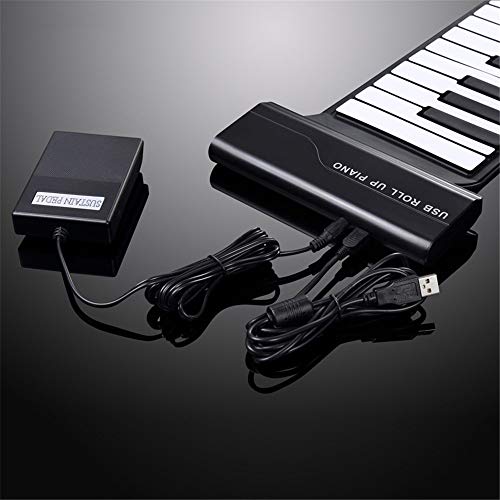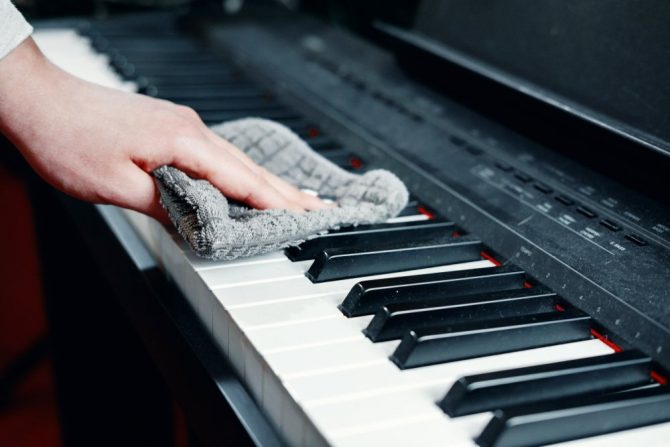|
Digital pianos offer various networking options. This connection of digital pianos allows to practice and capture and distribute different styles of music. We will show you how you can attach your digital piano to your specific phones, Android devices and Apple iOS devices in this post. Audio Recording or MIDI?If a digital piano has MIDI connectors, MIDI cables must be used. The cable MIDI IN end is attached to the MIDI OUT port on the Digital Piano to connect your digital piano to your personal computer. The cable's MIDI OUT is connected with the digital piano's MIDI IN port. If the keyboard sound is to be registered, then the job can not be accomplished through a MIDI connection. Just the output details (e.g., how strongly you have played, etc.) are transmitted through a MIDI interface. You can play software instruments on your computer with this MIDI information. However, it's not a video clip! Will you want to do it? Any challenge. You can already record MIDI if your keyboard has a USB-MIDI connection. Therefore, what you need is a video recording gui. If your keyboard has no USB MIDI nor standard MIDI connectors, use a MIDI and audio adapter (see above the iRig Pro duo or iTwo Audio box). You should do MIDI and audio like this Software for machinesThe first step towards ensuring the connection of the digital piano with the PC is to ensure the digital piano is fitted with either MIDI port or USB ports. The digital piano would then be attached to the cable to connect to the device. The USB A to USB B cable will be used while the portable piano has a USB port. In the case of a portable piano with MIDI ports, MIDI to USB cables can be included. In addition to being highly compatible with the digital piano, the device contains applications which prove highly efficient in recording music. Many applications allow piano players to edit files that can be stored in folders and record them. Computer programs are used in a wide range of forms, even to filter out unwanted noise during the recording. There are also programs with a clear work to further enhance or sweet the music by adding extra musical components. Finishing lineIn reality, linking your digital piano to your mobile or PC is much simpler. Cables and devices are all you need.
Piano applications will allow you to properly understand pianos and even though you can not read the sheet music, you will be able to play pianos! So your growth and progress was affected by the recording of your musical works. Recording of digital pianos can really be successful of proper ability and proper execution. Test any of the tips listed above during your play sessions. We should post a best piano app report to download. Hold tuned! Keep quiet!
0 Comments
You got a good little piano now and played on it for a bit. Yet the system itself seems to require good cleanliness and to be wondering how this elegance can be preserved. As you're afraid you'll ruin your priced house, you are unsure what to do. Who can trust? Who can? Where to go? Where to go? How do you have to do to return to your initial condition? Where are the keys cleaned?Below are few steps to clean your keys. You will comply. Recall that incorrect methods could damage the keys. Step 1 : Make a cleaning product. Take a little bowl and add 2 drops of light fluid to warm water.
Take a clean moist cloth that is colorless and soft. Dampen the solvent marginally and brush it separately on all white keys. During this process, any fingerprints or dust on the key is removed. Then take another fresh soft cloth to clear some moisture on the keys. Step 2: White Key Clean Take a wet cloth and dip it in the solution to clean the piano's white keys. Ensure the fabric is not too raw or too dusty, and has no dyes on it. Rub it softly around the keys after rubbing it in the solution. Each key is better transmitted separately. This is meant to remove stains and dust from them. Then, grab a dry cloth and place it on the keys carefully. The trace left in the solvent will be drained. Step 3: You can use soap or a mild detergent, mixed together with little water, when the keyboard is really dirty. Make sure you use a spare soft tissue for cleaning every time. Moisten the tissue a little and pass it across the keys. Using a separate rag to clean the keys off. Be sure the keyboard should not leak water or the key will be broken. Both the keys with a clean soft cloth are essential to dry. If you can't clean any stains, please call a technician or professional tuner for assistance. Do not attempt to scrub them with toxic or abrasive chemicals on your own. Digital piano instruments are typically well handled and last for years. Clean keys are necessary in order to work properly and look at them. You can end up doing something wrong to the key if you're not careful to clean the keys. Check consumer manual for procedures approved for cleaning by the packaging firm prior to implementing any cleaning technique. Often put the guitar in an outstanding place using the piano with clean moisture hands free. Reading and applying these directions will make for an efficient cleaning of your digital piano. Such activities should guarantee for many years that you love practicing your wireless piano. As noted above, how to clean piano keys is easy to know. A good cloth, a soothing wash and a little practice will feel and play your piano keys as well as the day you took in your piano. To stop those "sticky" keys, it is important to keep your piano keys clean. A mild gentle dusting on a daily basis using a feather duster often tends to avoid any waste being stuck in the buttons. Enjoy the smooth touch of your piano and play your new piano with pleasure! You would definitely have been here because you have an acoustic piano. You continue holding one of your buttons. The presence of a piano is one of the most frustrating things and although it is not normally too often, you may have problems living in a warm or damp environment. This is the most frustrating thing. In this article we should learn how to hold piano keys, how long it costs to repair them and how to repair yourself on the piano keys. Why do you stick piano keys?TWO's very common reasons I found why a piano key should stick. Continue to read and find out why the instrument may be troubled. I've already stated this, but that is by far the most common reason for holding piano keys, which I face almost every day. During my life in Britain, where we don't get damp or hot summers in particular, my piano is very prone to heat, and a lot of keys are on the far ends of the keyboard that swell up and stretch. But you will find it problematic if you are in a very humid climate. As stated earlier, wood expands and contracts to heat, and greater moisture and temperature will stretch your piano keys. Later in the post, we will go over how to fix it. You can fix that stick's piano keys?Reason 1: The piano key is connected to the loopholes The keystroke is the thick wood behind the keystrokes. Wood swelling may occur, particularly in high humidity regions. Sometimes a leaning player will click the button and push himself to the buttons. Anyway, a key can be added to your keyboard. Only take the lock and pull it forward in order to rectify it. You can sometimes have to remove the screws below the keyslip and put cardboard panels between keyslip and endblocks (easily produced by folding business cards). The aim is to create some space from the keyboard to the keyboard. To check if a swollen key triggers stickiness, push the right pedal (also called the support pedal) and keep it down. Then play the key gently when holding down the button. Has the key returned to its original position? If so, it doesn't last at the time. Keys can stick one day and not stick on the following day because of the changes in temperature and humidity. If it doesn't come back to the top, hold down the key halfway, then click the buttons to the left and right automatically. Repeat it repeatedly, and then release the original key. Now repeat the key while the support pedal is held down. Is it back to the rest of the way? If so, the sticking key has been set. Reason 2: Things under the keys Here's the easiest solution. However, it takes some confidence to take the keys from the piano to slide below. You have to contact the technician if you're nervous (which I understand fully). Upstream pianos are usually very easy to break apart; behind the music desk there is the big rectangular portion of wood, and the key board. The large rectangular area is usually held together by catches on both sides and can be removed easily.
The drop board should only be lifted, since it is generally held by the large rectangular portion. All you have to do now is pivot the key and make it easier. To see what's below, you will want to delete some buttons. Take a vacuum cleaner or use your hands to clear anything in it. Only reassemble when you're done. The keys normally have numbers that tell you where the keys should be mounted. You need to call a technician if those corrections are not working so that you risk destroying your system. |



 RSS Feed
RSS Feed
